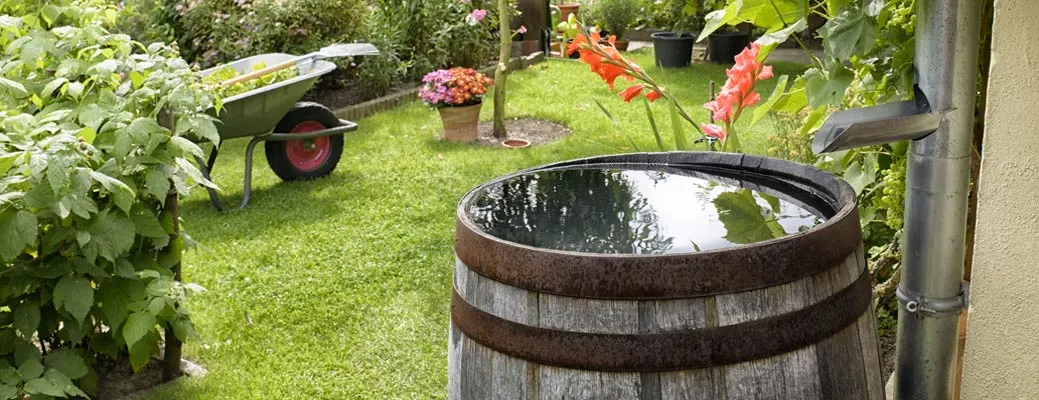How to Install a Rain Barrel Watering System


Don’t let the thousands of gallons of rainwater that collect on your roof or outdoor structures go to waste. With a rain barrel (or two) attached to your gutter system, you can capture this natural resource to utilize when watering your flowers, shrubs, or your veggie and herb patch. You won’t have to tie up your outdoor spout with clunky sprinkler contraptions, wrangle a muddy hose in your work clothes or accidentally soak yourself with the sprayer again.
There are many benefits to installing a rain barrel on your property. Rainwater doesn’t contain the minerals, chlorine, fluoride and other chemicals that municipal water does. It is naturally good for plants and can be used directly from the rain barrel or cistern without special filtering. Rain barrels also capture rainwater from the roof that would otherwise become runoff. Stormwater runoff picks up pollutants such as soil, lawn fertilizers, pesticides, trash, animal waste, road salts, chemicals, etc. and transports them to waterways. Installing a rain barrel can protect waterways from pollutants as well as keep aquatic life and human health safe from harm.
Rain barrels collect rainwater from your roof by rerouting a section of your gutter’s downpipe into a nearby reservoir. After your rain barrel is installed, the Environmental Protection Agency estimates a single 55-gallon barrel can save you up to 1,300 gallons of water during the hot summer months.
You can purchase a rain barrel at your local gardening center, but it is important to check with your water utility company first. Many municipalities offer them at a discounted rate through an annual distribution program. Otherwise, rain barrels are available for purchase online.
Find the downspout located closest to the plants you routinely water. Keep in mind, your rain barrel will be heavy when full of water, so it will need to sit on stable ground. Your rain barrel can sit on the ground, but elevating it using pavers or blocks may make it easier for you to attach a hose or fill a watering can.
Once you’ve determined the location for your rain barrel, detach the elbow at the bottom of your downspout and cut your downspout (above the barrel) using a hacksaw. You will re-attach the elbow after cutting, so make sure you leave enough room above the rain barrel for it. To attach the elbow, crimp the edges of the downspout slightly and slide the elbow over it. The goal is for the bottom of the elbow to hang about two inches above the rain barrel. If in a cooler climate, consider saving all your gutter hardware for winterizing.
Most rain barrels have a ball valve that you can hook up to an extender hose. You can route an extender hose to your garden or your decorative landscaping and attach that to a network of soaker hoses. If using soaker hoses, weave those through your plants as close to the root balls as you can. When it’s time for watering during dry spells, all you have to do is head outside and flip the valve on the rain barrel.
You can also use your rain barrel to fill your watering jug. Most rain barrels come with a short hose (four feet or less) to attach to the ball valve. Just use that to fill your watering canister. If you’re using a soaker system, add a splitter with your soaker system on one side and the short hose on the other for filling the jug. It’s as easy as flipping a switch.
Rain barrel maintenance is minimal but important. Once a year, make sure to check the parts and disconnect and clean the barrel. Empty the rain barrel in between storms. Be sure there is no exposed, standing water where mosquitoes can breed. Keep the rain barrel in a relatively shaded area to reduce the formation of algae. During winter months, disconnect the barrel and store it in a shed or garage or keep the faucet open so water does not freeze causing the barrel to crack.
Contact a local Farm Bureau agent to learn more about how you can protect your property with homeowners insurance.